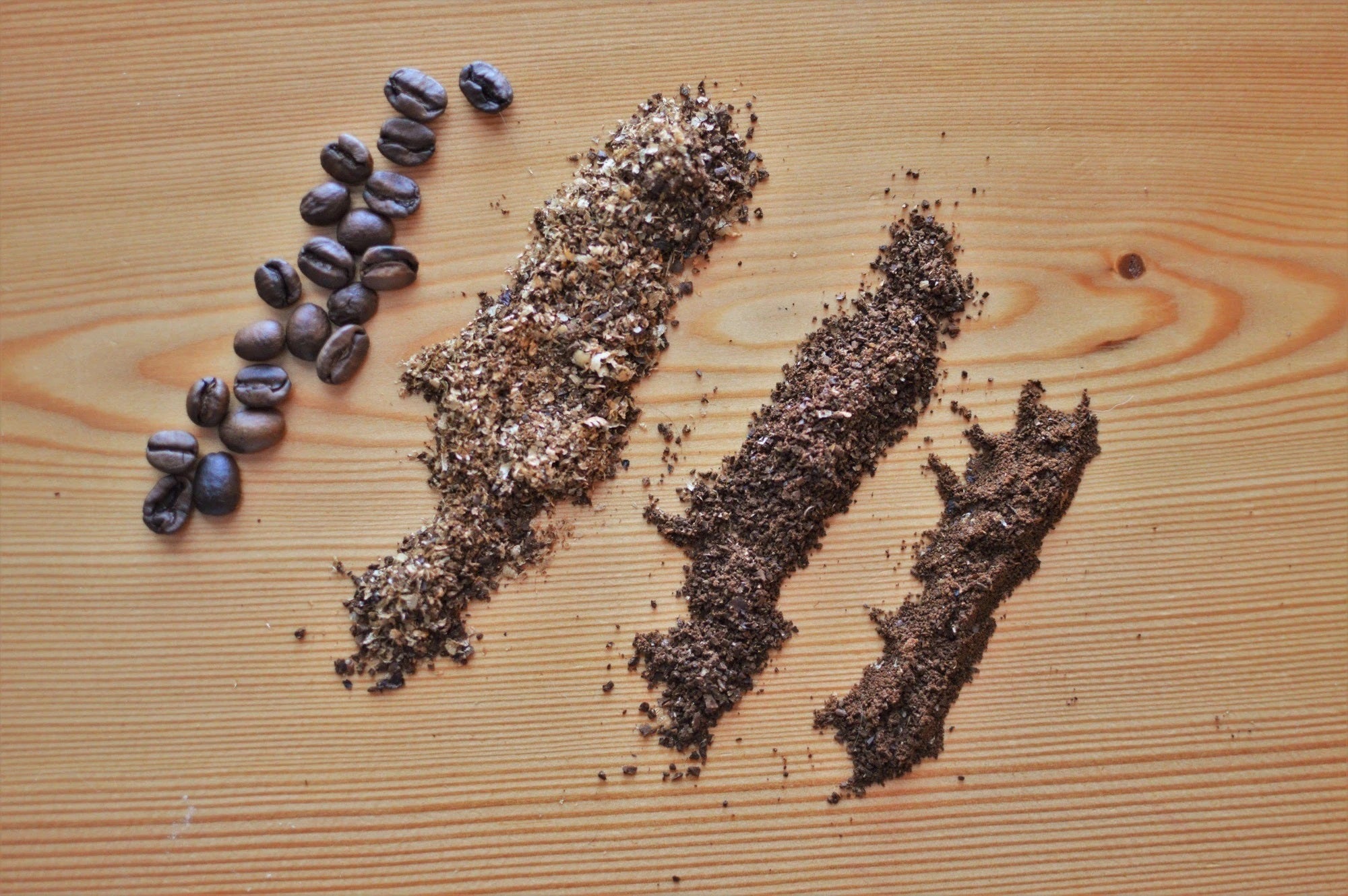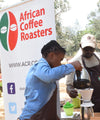Letzter Beitrag
Stichworte

The importance of understanding coffee grinding and grind sizes
Steffen Sauer
Mar 12, 2021
The past weeks I got several messages, mails, or questions regarding the right coffee grind size. Having my grinder in the background during each video call at work also triggers questions regularly.
There are two advantages of grinding your own beans, the first one is enjoying fresher coffee, the other one is less obvious and has to do with the way we drink coffee - or better the different options that exist to prepare our coffee. Having your own grinder gives you the opportunity to experiment with grind sizes and extraction methods.
In this article I want to cover everything from ground coffee vs. whole beans, grind sizes for different brewing methods, and the technical relationship between grinding and extraction.
Finding your personal extraction favorite - and what grind size has to do with it
The general rule of thumb is that the longer the water will remain in contact with the beans, the coarser the grounds have to be.
The first things that get extracted during coffee brewing are various acids. They are sour, they are intense, and they can even taste somewhat salty. Next are the aromatic oils, dissolved solids, and the sugars. These things are much more pleasant on their own, but they give life to the acids when they are extracted to create a richer, fuller flavor. Bitter compounds are some of the last things to be extracted from the grounds. Also, they play an important role - you want a small amount of these things to add flavor depth and to help round out the acids, but you want to avoid extracting too much of them.
There is a sweet spot where all these flavor compounds come together to form a well-rounded, delicious flavor profile with tangy acids, sweet sugars, vibrant aromatics, rich flavors, and even a light layer of bitter low notes. This is coffee harmony.
Especially important to understand is the impact of particle size uniformity on the extraction quality. The problem with this is that the small particles (generally called fines) will over-extract while the larger particles (called boulders) will under-extract.
If you don’t extract enough (under-extracted), your coffee will be slightly overpowered by those bright acids. You will notice that the coffee’s just too tangy, sour, or salty.
If you extract too much (over-extracted), your coffee will be overly bitter. Those bitter compounds will destroy the pleasant sugars and flavors, resulting in dullness.
This means that if your coffee is tasting bitter (over-extracted) or sour (under-extracted) then grind size is a parameter that might be off.
The biggest struggle with grinding your own beans is that there is no universal number or measurement that can communicate specific grind size. The coffee industry has opted for generic size of fine, medium, and coarse with any number of different subcategories between them.
I can only give you a rough indication of what the grind for a given brewing method must look like. From there it will be a process of trying to get your grind to the perfect size.

Extra Fine
This is the finest grind setting and it is worth noting that most grinders struggle to grind this fine. The grind should resemble flour and clump together. This is the grind size that is used for Espresso and Turkish (although Turkish requires it to be even finer than is required for espresso).
Fine
This is slightly coarser than the extra fine setting but still relatively fine. It should be slightly finer than table salt. The grind should clump together in size of a pea. It is the grind size used for Moka Pot/Stovetop, V60, Aeropress and portafiller machine. All of them with a quick brew time.
Medium Coarse
At this size, the particles start to look like specific little chunks of a coffee bean. It should resemble rough sand. This is the grind setting for a Chemex or a normal coffee machine.
Coarse
Grind size and Bean Age
The freshness of the coffee beans will also affect the grind setting that you use. You will experience that the grind setting which seemed perfect for a batch of beans a few weeks ago is now either under- or over-extracting your brew. This is especially true for espresso which is the most precise brewing method. You will need to tweak your grind setting as the beans age, the “older” the coffee, the finer you must grind.
Grind size and Roast Profile
Dark roasted coffee beans tend to be more brittle and more soluble than lighter roasts as they have been exposed to heat for longer. As a result, darker roasts should be ground slightly coarser than lighter roasts for a given brewing style. Similarly, even the altitude at which a bean is grown may impact the required grind setting. You will generally find that whenever you get a new batch of beans and especially a different blend or type of bean, that you will need to tweak your grind sizes.
Summary
Coarse grinds extract slowly and are better for immersion brewing methods while finer grinds extract quickly and are better for infusion brewing methods. While all grinders will produce a range of particle sizes the aim is to have the smallest possible particle size distribution.I hope this article has convinced you that the world of grinding is a world worth entering and helped you to do it a little bit better.



